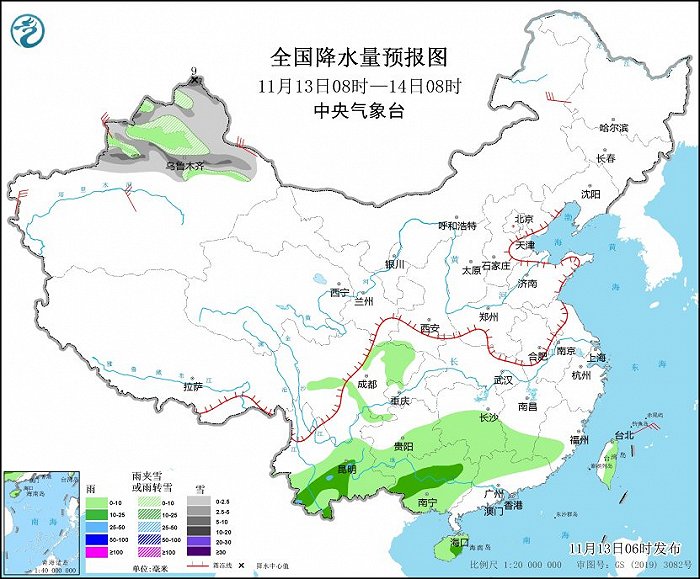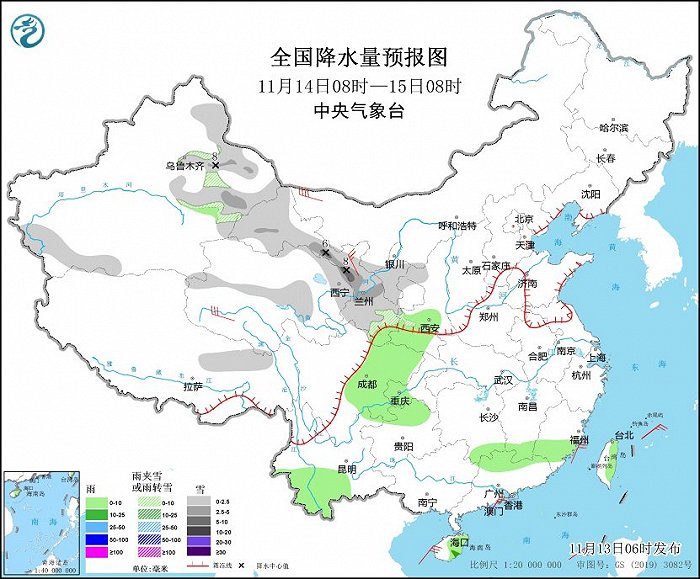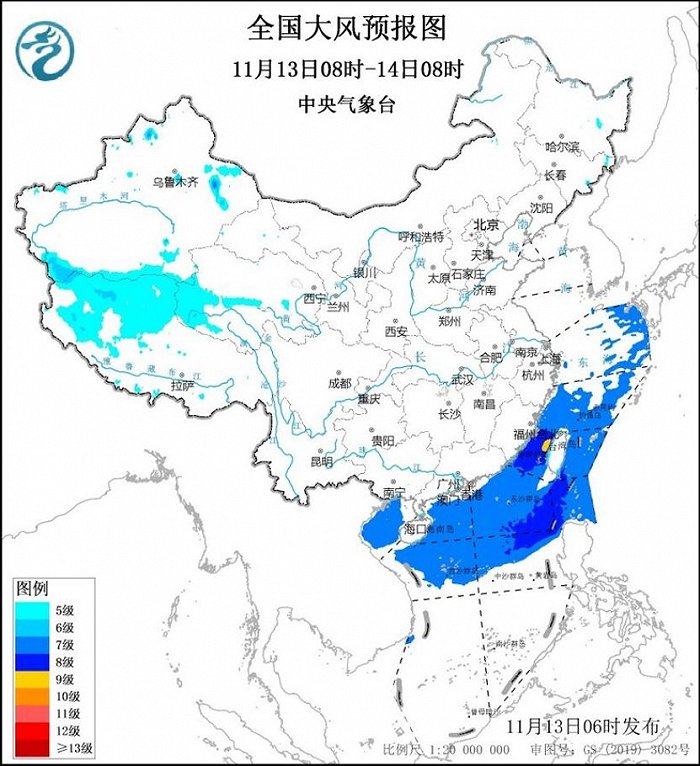CCTV News:According to the website of the Central Meteorological Observatory on November 13, yesterday, cold air went deep into the southern region, and the temperature in many places "dropped". At 14 o’clock yesterday, there was a temperature drop of 6~10℃ in eastern Sichuan, western Chongqing, south-central Guizhou, Guangxi and other places, with the most severe temperature drop in Guizhou and Guangxi, and the drop in Luodian, Guizhou and Donglan, Guangxi exceeded 14℃.
At present, the influence of cold air is coming to an end. From 13th to 15th, the temperature in most parts of central and eastern China will rise. From 15th to 17th, another cold air will affect most parts of China from west to east. The temperature will drop by 4 ~ 6℃ successively, and the local temperature drop will reach 8 ~ 10℃. There are small to medium snow or sleet in parts of central and northern Shaanxi, northwestern Shanxi, central and eastern Inner Mongolia, and northeast China, and heavy snow in eastern Heilongjiang. Please pay attention to the latest forecast information of cold air and adjust the dress in time.
In terms of rain and snow, it is expected that there will be small to medium snow or sleet in parts of northern and eastern Xinjiang, Gansu, northern Qinghai, Ningxia and other places today and tomorrow. Among them, there is heavy snow in Altay area of Xinjiang, Tacheng area and areas along Tianshan Mountain and Qilian Mountain area of Gansu. There are rainy weather in parts of Southwest China, Jiangnan and South China, mainly light rain, and moderate to heavy rain in central and southern Yunnan, western Guangxi and Hainan Island.



In addition, from 13th to 14th, the winds in China’s offshore waters are still relatively strong, and the Central Meteorological Observatory continued to issue a blue gale warning this morning: it is predicted that there will be strong winds of magnitude 7-8 and gusts of magnitude 9 in most of the East China Sea, Taiwan Province Strait, east of Taiwan Province, bashi channel, northern and central South China Sea, and Beibu Gulf from day to night, among which the winds in parts of the Taiwan Province Strait can reach magnitude 9 and gusts of magnitude 10. Ships sailing and operating in the above-mentioned sea areas should pay attention to safety.
